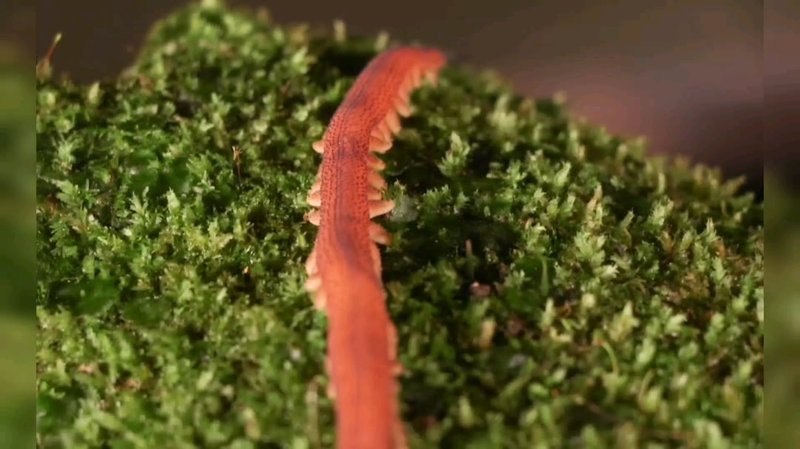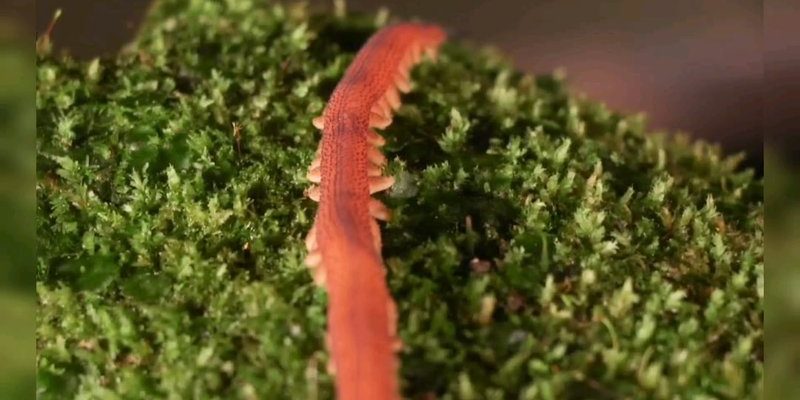
Now, you might be wondering: what exactly is a velvet worm? These remarkable little animals, also known as onychophorans, belong to an ancient group of creatures that have existed for millions of years. With their velvety texture and squishy bodies, they look like something out of a science fiction movie. They thrive in moist environments, making their trails easier to spot during a hike or a casual walk in the woods. Let’s dive into the world of velvet worms and discover their tracks—the signs of their presence that can reveal so much about their lives.
What Are Velvet Worms?
Velvet worms are small, segmented animals that usually measure between 1 to 10 inches long. They have a unique appearance, with soft, velvety skin and a set of stubby legs that help them crawl through leaf litter and damp soil. Think of them as a cross between a caterpillar and an earthworm! They are typically found in humid, tropical areas, so if you live near a forest or a wetland, there’s a good chance you might cross paths with one of these elusive creatures.
These fascinating organisms belong to an ancient lineage, and they’re more closely related to arthropods (like spiders and insects) than to worms. Despite their appearance, velvet worms are predators, using a sticky slime to catch their prey, which typically includes insects and other small invertebrates. Isn’t it wild to think about a worm with a hunting strategy?
Why Tracks and Trails Matter
Observing velvet worm tracks and trails is more than just a fun activity; it can offer insights into their behavior and habitat. The trails they leave behind can tell us where they’ve been, what they’ve been hunting, and even how they interact with their environment. By learning to recognize these tracks, you can become an amateur biologist, gathering clues about these creatures’ lives without ever needing to see them in person.
The trails can vary based on the surface they’re crawling on. For instance, in soft, moist soil, the tracks might appear as shallow grooves, while on harder surfaces, they may look more like faint indentations. Understanding these differences can help you spot velvet worm activity in various settings. Imagine being able to track their movements like a wildlife detective!
How to Spot Velvet Worm Tracks
Finding velvet worm tracks can be an exciting adventure, but you have to know where to look. Here are some tips to help you spot them:
- Look in Damp Areas: Velvet worms thrive in moisture, so check areas like leaf litter, under rocks, and along the edges of streams.
- Observe the Ground: When you’re out walking, keep an eye on the ground. Look for faint trails or grooves that seem out of place.
- Time Your Search: Early morning or after a rainstorm is often the best time to find tracks, as the moisture brings the worms out.
Keep in mind that velvet worm trails can be quite subtle, so patience is essential. Take your time, and don’t rush the process. This is all part of the joy of observing wildlife. Honestly, the thrill of spotting a tiny trail and knowing it was made by one of these incredible creatures is what makes the experience so worthwhile.
Understanding Velvet Worm Behavior Through Their Trails
Once you spot these tracks, you might start to wonder what they reveal about velvet worm behavior. The trails can indicate several things, such as feeding habits, mating activities, or even territory marking. Here’s how you can interpret some of the signs:
– **Hunting Trails:** If you see straight, narrow lines, these might indicate a velvet worm on the hunt. They often leave a sticky trail while pursuing insects.
– **Mating Displays:** Trails that seem to loop or curve can suggest mating behavior. Male velvet worms often engage in display behaviors that create distinctive trails.
– **Home Range:** A series of interconnected trails can hint at a velvet worm’s home range. By studying how far and wide these trails go, you can get a sense of their territory.
By paying attention to these details, you might just uncover the hidden life of velvet worms in your area. It’s like piecing together a puzzle of their existence, which can be incredibly rewarding!
Tips for Documenting Your Findings
If you’re excited about tracking and observing velvet worm trails, why not document your discoveries? Keeping a record can be both fun and educational. Here are a few tips to get started:
- Take Photos: Use your phone or a camera to snap pictures of the tracks. This will help you remember where you found them and maybe even identify patterns later.
- Journal Your Observations: Keep a notebook handy to write notes about the location, the conditions, and any other wildlife you see. This makes your adventure even more engaging.
- Share with Others: Join local wildlife groups or online forums to share your findings. You might meet others who are just as passionate about these fascinating creatures.
Documenting your findings not only contributes to your understanding but also helps raise awareness about velvet worms and their habitats. It’s a great way to connect with nature and fellow enthusiasts!
Comparing Velvet Worms to Other Species
You might notice that velvet worms share traits with other creatures, such as earthworms or caterpillars. This comparison can highlight just how unique and special they are. While earthworms are excellent for soil aeration and caterpillars transform into butterflies, velvet worms are living fossils, providing insights into the evolution of life on Earth.
Their slime, for instance, is not only a hunting tool but also serves to keep them moist—a necessity for survival. Other creatures use different strategies: think of how a snail uses its shell for protection. Each creature plays a role in its ecosystem, and understanding these comparisons helps illustrate the diversity of life.
Respecting Velvet Worm Habitats
As you venture out to observe velvet worm tracks, remember to respect their habitat. These critters rely on specific conditions to thrive, so it’s essential to tread lightly. Avoid disturbing the leaf litter and try to minimize your impact on the environment.
If you’re in a location where velvet worms are known to live, consider educating others about their role in the ecosystem. Sharing knowledge about these amazing creatures fosters appreciation and encourages conservation efforts.
In conclusion, observing velvet worm tracks and trails opens up a whole new world of understanding about these remarkable animals. By taking the time to look for their tracks, you can gain insights into their behavior and ecology, all while enjoying the beauty of nature. So next time you’re out exploring, keep your eyes peeled for those delicate trails—it might just lead to an unforgettable discovery!

